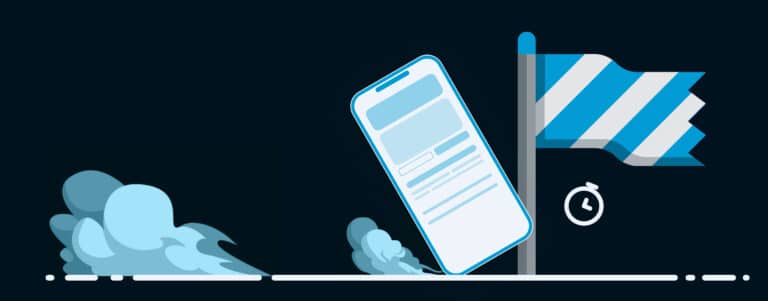Contents
In an era where the internet plays an integral role in our daily lives, website security has become paramount. Whether you’re running a personal blog, an e-commerce site, or a corporate portal, safeguarding your website and user data is non-negotiable. In this article we’ll explore essential best practices to fortify your website’s security and protect it from potential threats.
1. Keep Software Updated:
Regularly updating your website’s software, including the Content Management System (CMS), plugins, themes, and frameworks, is your first line of defence against security vulnerabilities. Developers frequently release updates to patch known vulnerabilities, so staying up-to-date is the best and easiest starting point. Outdated software can become a prime target for cyberattacks, making it crucial to maintain the latest versions to mitigate potential security risks. By ensuring that your website’s software is regularly updated, you fortify your defence against emerging threats and enhance the overall security of your digital assets.
2. Use Strong Passwords:
Weak passwords are a common entry point for hackers. In fact, it’s the most frequent cause of data breaches and hacks, second only to breaches due to outdated software and frameworks. Implement password policies that require complex passwords with a mix of uppercase and lowercase letters, numbers, and special characters. Encourage users to change their passwords periodically. Strong, unique passwords significantly reduce the risk of unauthorised access to your website and sensitive data. By emphasising the importance of strong passwords and periodic changes, you enhance your website’s security and reduce the likelihood of successful brute force or credential stuffing attacks.
Once you have set a strong password, remember that sharing passwords over open or unencrypted messenger services or on mail leaves you equally vulnerable. Great password managers, like Zoho Vault and NordPass have secure sharing capability and even Data Breach Scanning that alerts you if your saved credentials might have been subject to a data breach.
3. Implement Two-Factor Authentication (2FA):
Two-Factor Authentication adds an extra layer of security by requiring users to provide two forms of identification before granting access. This typically involves something the user knows (password) and something they have (a mobile device or email). 2FA is a powerful deterrent against unauthorised access, even if a malicious party obtains a user’s password. It provides an additional verification step, making it significantly more challenging for attackers to breach your website. Implementing 2FA demonstrates a commitment to security and instills confidence in your users that their accounts and data are well protected.
4. Secure Hosting Environment:
Choose a reputable hosting provider that prioritises security. Ensure they offer features like firewalls, intrusion detection systems, and regular server security updates. A secure hosting environment forms the foundation of your website’s security. Reputable hosting providers invest in robust security measures that safeguard your website from various threats. Features like firewalls and intrusion detection systems actively monitor and protect your site, while regular server security updates patch known vulnerabilities, ensuring that your hosting environment remains secure and resilient.
5. Web Application Firewall (WAF):
A Web Application Firewall acts as a barrier between your website and potential threats. It filters incoming traffic, blocking malicious requests while allowing legitimate ones. WAFs provide an added layer of protection by analysing incoming traffic and blocking malicious requests or potential threats before they reach your website. This proactive approach helps prevent a wide range of attacks, such as SQL injection and cross-site scripting, from compromising your site. Integrating a WAF into your security strategy reinforces your website’s defences and shields it from a variety of cyber threats.
6. Security Plugins and Tools:
Use security plugins and tools tailored to your website’s platform. For example, WordPress users can utilise plugins like Wordfence or Sucuri Security for added protection. Security plugins and tools designed for your specific platform offer customised protection against common vulnerabilities and threats. They often include features like malware scanning, login attempt monitoring, and firewall capabilities. By leveraging these tools, you can enhance your website’s security posture and gain better control over potential risks.
7. Monitoring and Alerts:
Implement security monitoring systems that can detect suspicious activities or unauthorised access. Set up alerts to notify you immediately if anything unusual occurs. Security monitoring and alert systems act as a watchful eye over your website, continuously assessing for signs of suspicious activities or potential breaches. When unusual events are detected, these systems can trigger instant alerts, allowing you to take swift action to mitigate threats. By staying vigilant through monitoring and timely alerts, you can respond effectively to security incidents and safeguard your website from potential damage.
8. Incident Response Plan:
Have a well-defined incident response plan in place. In the unfortunate event of a security breach, you’ll be prepared to act swiftly and effectively to minimise damage. An incident response plan outlines the specific steps and procedures to follow in the event of a security breach. It helps ensure that your team is well-prepared to respond quickly and efficiently, minimising the impact of a breach and facilitating a swift return to normal operations. By having a well-defined plan in place, you can demonstrate a commitment to proactive security and resilience in the face of potential threats.
9. Stay Informed:
Stay updated on the latest security threats and trends in the cybersecurity landscape. Knowledge is your best defence against evolving threats. The cybersecurity landscape is constantly evolving, with new threats and attack vectors emerging regularly. Staying informed through ongoing research, news, and industry reports allows you to remain proactive in your security measures. By understanding the latest threats and trends, you can adapt your security strategy to address current challenges and enhance your website’s resilience against evolving cyber risks.
Conclusion
Remember that website security is an ongoing process. Regularly revisit and update your security measures as new threats emerge and technologies evolve. By implementing these best practices, you’ll significantly reduce the risk of security breaches and provide a safer online experience for your users.










































